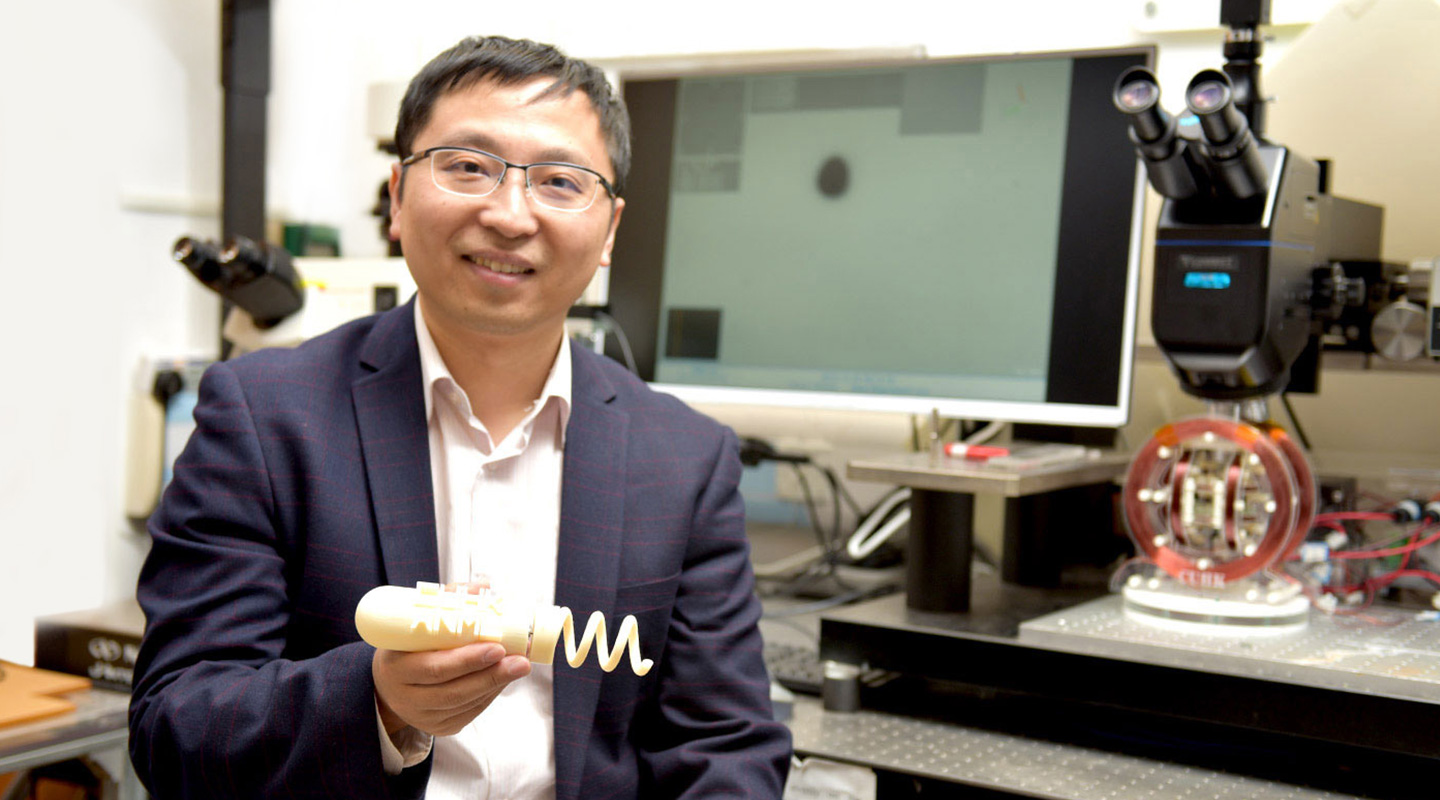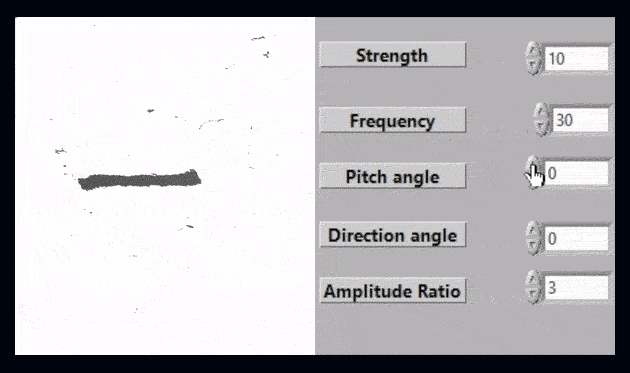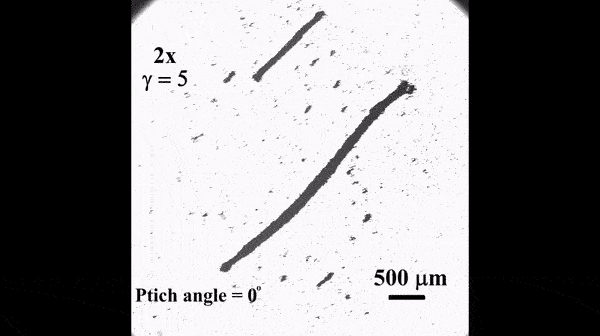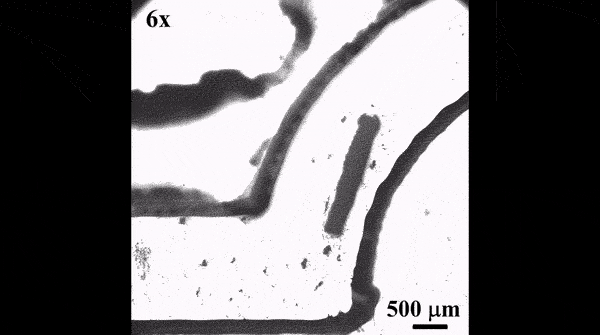Dear readers, With the launch of e-newsletter CUHK in Focus, CUHKUPDates has retired and this site will no longer be updated. To stay abreast of the University’s latest news, please go to https://focus.cuhk.edu.hk. Thank you.
Sending Red Cross to the Brain
Zhang Li’s army of nanorobots

‘Swarming Nanorobots’ sounds like the name of a budget sci-fi film. It could be the future of medicine, allowing for easy treatment of parts of the body that are hard to reach.
Nanorobots are tinier than tiny – around 10,000 would fit across a human hair. CUHK Prof. Zhang Li engineers them to target illness in the brain and the digestive tract. Those are two areas where doctors struggle to work, often doing so with very invasive and dangerous operations. Yet the gut and the brain are also the sites of many critical health risks.
The idea of miniaturizing medicine has been around for decades. Richard Feynman, the Nobel Prize-winning ‘Father of Microphysics,’ broached the idea of being able to ‘swallow the surgeon’ back in a 1959 lecture.
Capsules containing tiny cameras won approval from US regulators in 2001, making it to perform an endoscope with all the simplicity of swallowing a large pill. But the devices make their way through the digestive tract in a passive way, without human direction.
Professor Zhang, who holds a post in CUHK’s Department of Mechanical and Automation Engineering, has taken mini-medicine to a whole new level. He has forged nanorobots that can help administer drugs selectively and with a high degree of precision.

The engineer holds a Guinness World Record for the smallest robotic medical device, and has the plaque on his office wall to prove it. He was part of a team at the Federal Institute of Technology in Zurich that in 2012 invented a microrobot that’s just 60 micrometres long and able to ‘swim’ within the body.
Cyborgs have also become reality through Zhang’s work. Using spirulina algae as a base, he has helped graft an iron oxide nanoparticle onto the surface of the algae to form a ‘biohybrid’ that combines natural and man-made materials.
This cyborg/biohybrid has two advantages. We normally think of spirulina as an ingredient in food, ‘veggies’ to throw into a smoothie. But it is also naturally luminescent, making it trackable within the body, and is biodegradable into a substance that is toxic to cancer cells.
The iron oxide makes the cyborg even more useful since it is magnetic. This means the metal powder can be picked up via magnetic resonance imaging, with an MRI scan. MRI scans allow doctors to examine deep, soft tissue that doesn’t show up on an X-ray, while the fluorescence marks voids.
Spirulina has another advantage. It is porous, with small cavities in the algae. Scientists can dehydrate the spirulina, emptying out those tiny holes, then dip the algae in a drug so that it soaks up the active ingredients. As the spirulina degrades within the body, it releases the drug.
By targeting the medicine more efficiently, it’s possible to lower the dosage of the drug used dramatically – using even 1/100th of the dose. ‘It’s a much more targeted drug delivery than when injecting an intravenous drug that just circulates in the blood,’ Professor Zhang says.
Such nanorobots are, however, not intelligent. They can be guided by a magnet but have to be told what direction to take. The new quest is for an intelligent nanorobot that knows of its own accord where to go in the body.
‘You cannot add a ‘brain’ – so how can it find the location?’ Zhang asks. ‘We can add smart materials so the bacterium can find the location by itself.’

This would take the form of sensors on the cell membrane that can detect a chemical trail. The chemical concentration can let the bacteria know where to go, a process called chemotaxis. It works the same way we might follow our nose to a fresh cookie in the kitchen.
Professor Zhang has demonstrated the ability to ‘swarm’ nanorobots, steering thousands of particles at once by using a rapidly oscillating magnetic field. This swarm can split up and rejoin, reshape itself like a flock of birds or school of fish, allowing the particles to pass through the narrowest of spaces only to reform on the other side.
Professor Zhang is looking to use that strategy to combat blood clots, particularly those in the brain. The old-fashioned treatment for a stroke is a mechanical thrombectomy, where a doctor inserts a device into your brain cavity to suck the blood clot out. It’s a highly invasive, dangerous operation. Drugs can break down the clot, but breaking down all clots in the body may raise the risk of a heart attack.
Professor Zhang hopes to drive a swarm of drug-carrying particles to a specific blood clot. He has created a system that he’s now testing in the lab, to position a test stroke ‘victim’ within a magnetic coil that can lure the nanorobots to a certain place in the brain.

In a test tube, a swarm carrying a blood-dissolving drug can dissolve a 5 millimetre clot in less than 20 minutes. That’s critical during a stroke, when a victim requires treatment within the first three or four hours for it to be at its most effective.
Beyond a blood clot, drugs could also target a cancer tumor. That adds another layer of difficulty.
‘With a stroke, it’s very simple: there’s a blockage, and you just need to get rid of it,’ Professor Zhang says. ‘Cancer is more complicated. You can kill the cells, but they’re living, and they want to survive.’
By Alex Frew McMillan
This article was originally published on CUHK Homepage in Mar 2019.